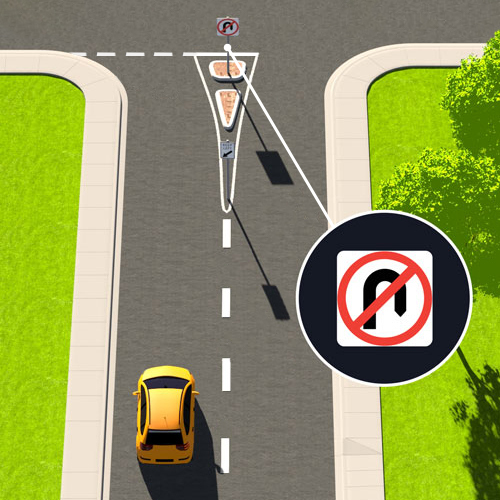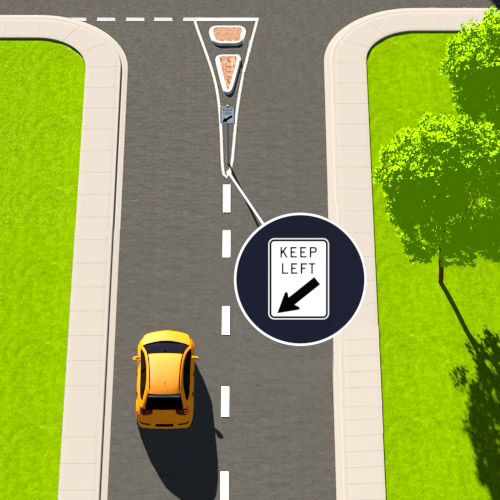WRONG WAY—GO BACK
The Wrong Way sign means you're driving in the wrong direction on a
one-way road.
If you encounter this sign:
- Remain calm
- Stop immediately
- Exit the road as quickly and as safely as possible.
Hey! It looks like you've lost your internet connection. A stable connection is required to access this content. Please reconnect to continue where you left off.
Regulatory signs are some of the most common signs on Queensland roads. They include Give Way, Stop, and Roundabout signs.
Click on the following link to find a list of Queensland’s Regulatory signs open_in_new.
Stop signs are usually placed at intersections where it's difficult to see oncoming traffic. They are usually accompanied by a solid white line.
You have to stop completely before the line. If there is no Stop line, stop where you have a clear view of the intersection.
Give Way signs are often placed where oncoming traffic can be easily seen. They are accompanied by a broken white line.
Slow down when you see a Give Way sign and apply the give way rules. Always give way to pedestrians crossing the road you are entering.
Most of the time, you'll need to come to a complete stop at a Give Way sign because there will be oncoming traffic.
Roundabouts are designed to control the flow of traffic at busy intersections. They are accompanied by a white broken line at the entrance, and the rule is to give way to all vehicles already on the roundabout.
The Wrong Way sign means you're driving in the wrong direction on a
one-way road.
If you encounter this sign:
The No U-turn sign is placed at locations where it's unsafe to do a U-turn.
You're not allowed to make a U-turn where you see this sign.
It's illegal to do a U-turn at a traffic light unless there's a sign that shows that you can.

No Turn signs show that the only safe direction is straight ahead. For example, turning may mean you end up driving into oncoming traffic.
Only drive in the direction shown by the arrow when you see a No Turn sign.
These signs are displayed where it would be unsafe to turn—for example, where you may be turning into a one-way street.
Don't turn in the direction indicated by these signs.
Driving to the right of this sign may mean you will drive into something—for example, an island or oncoming traffic.
Drive to the left of this sign whenever you see it.


The Two Way sign means that vehicles travel in both directions on a road.
These signs are used where it's not obvious that traffic goes both ways.
This sign means you're not allowed to enter the road ahead. You may be driving into oncoming traffic because it's a one way road.
Don't drive onto the road beyond this sign.
The No Overtaking or Passing sign is used where it is unsafe to pass traffic.
You can't overtake a vehicle travelling in the same direction as you, or pass a vehicle travelling towards you until:
This sign keeps the right-hand lanes of a multi-lane road free for vehicles to overtake slow-moving traffic.
Don't drive in the right lane unless overtaking, turning right, making a U-turn, avoiding an obstacle, or driving in congested traffic.
You've reached the end of .
Next up is
You've reached the end of which completes Road Signs I.
Update your browser to view this website correctly. Update my browser now